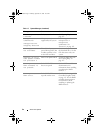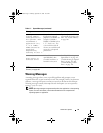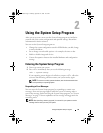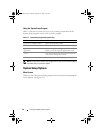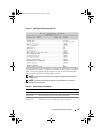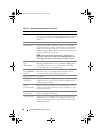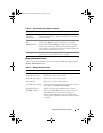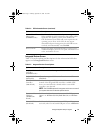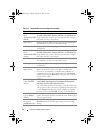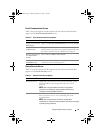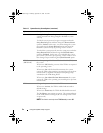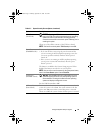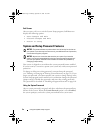
Using the System Setup Program 49
Memory Information Screen
Table 2-3 lists the descriptions for the information fields that appear on the
Memory Information screen.
Keyboard
NumLock
(On default)
Determines whether your system starts up with the NumLock
mode activated on 101- or 102-key keyboards (does not apply to
84-key keyboards).
Report Keyboard
Errors
(Report default)
Enables or disables reporting of keyboard errors during the
POST. Select Report for host systems that have keyboards
attached. Select Do Not Report to suppress all error messages
relating to the keyboard or keyboard controller during POST.
This setting does not affect the operation of the keyboard itself
if a keyboard is attached to the system.
Asset Tag Displays the customer-programmable asset tag number for the
system if an asset tag number has been assigned.
Table 2-3. Memory Information Screen
Option Description
System Memory Size Displays the amount of system memory.
System Memory Type Displays the type of system memory.
System Memory Speed Displays the system memory speed.
Video Memory Displays the amount of video memory.
System Memory Testing Specifies whether system memory tests are run at system
boot. Options are Enabled and Disabled.
Redundant Memory
(Disabled default)
Enables or disables the redundant memory feature.
When set to Spare Mode, the first rank of memory on
each DIMM is reserved for memory sparing. See
"Memory Sparing Support" on page 101. Redundant
memory feature is disabled if the Node Interleaving field
is enabled.
Table 2-2. System Setup Program Options (continued)
Option Description
Book.book Page 49 Monday, September 14, 2009 12:57 PM




